Book purchasing and collecting is a great joy in its own right, but when a little extra something reveals itself on purchase; particularly with regards to older, rarer titles, it is quite remarkable how other research opportunities, and chances to gain more knowledge of your subject open up.
A recent purchase of the late Brother Rev. F. de P. Castells’ 1931 book: English Freemasonry in Its Period of Transition 1600–1700, revealed that on the front of the book was a pasted-in bookplate relating to ‘Carl E. Ekman, Wisby’.
Going by the extensive pencilled underlining in the earlier part of the book, it was apparent that Ekman, (it may conceivably have been a subsequent owner) had a particular interest in Castells’ Rosicrucian theory of Masonic evolution.
There are a number of other Masonic books in the marketplace with Ekman’s bookplate thereon, and from this fact alone it could be assumed that Ekman was a Freemason, or at the very least, a keen student of the Craft.
This prompted some investigation into what appeared to be a very interesting individual, and those initial impressions were found to be accurate.

left: Bro. Carl Emil Ekman’s bookplate
right: Bro. Carl Emil Ekman in Masonic regalia – courtesy of Bro. Ronny Schultz, Grand Secretary, Swedish Order of Freemasons
Carl Emil Ekman was born on 13 September 1868 in Visby, the principal town in Gotland, a small island off the mainland of Sweden. He was the son of merchant and consul Carl Laurentius Ekman.
Carl Emil was a successful businessman, who following a chequered career in his father’s company, broke out on his own, establishing his own trading company in 1889; and in 1890, became a ship’s clerk in Visby.
His trading company engaged in timber exports; breakdown recovery; and insurance. Until 1904, his company was also involved in what is described as ‘wholesale business’.
From 1903, he was a board member of Rederi AB Gotland, a company involved in shipping, hotel, and tour operations, becoming CEO (Chief Executive Officer) in 1912.
In 1904, he became a board member of the Gotland railway, becoming CEO in 1921.
He was also one of the founding members of the AB Gotlands bank in 1907, and became chairman of the bank’s central board.
In 1908, he was a driving force behind the creation of the Gotland Chamber of Commerce and was chairman of the board of Visby sjömanshus between 1904 and 1912.
He was also chairman and CEO of Visby stuveri AB; chairman of Skeppargillet; and held positions of trust in a number of other companies.
He was also active in local politics; a city councillor in Visby from 1903 to 1932; a member of Gotland County Council from 1910 to 1934; and member of the port management in Visby from 1901 to 1940; serving as chairman from 1918 to 1940.
In 1901, he succeeded his father as German consul in Visby, and from 1920 to 1939 he was also Dutch consul.
From 1899, he was chairman of the Gotland Tourist Association.
A merchant and cruising services company bearing his name is still extant and running out of Visby in Gotland, evidently carrying on the long family tradition.
FREEMASONRY AND THE SWEDISH ORDER OF FREEMASONS
Ekman was a very active Freemason within the Swedish Order of Freemasons, who practice the ‘Swedish Rite’ of Freemasonry.
Before we discuss his Masonic career, we should perhaps take a bit of time to understand something of the Swedish Rite, which is significantly different in structure to the Freemasonry practiced in the United Kingdom.
It is important to note that the four Grand Lodges in the Scandinavian countries of Sweden, Denmark, Norway and in Iceland, all work the Swedish Rite, which was developed in Stockholm during the second half of the 18th century, and completed in 1800, under the leadership of Duke Carl, later King Carl XIII.
The four Orders:
The Swedish Order of Freemasons (SFMO)
The Danish Order of Freemasons (DDFO)
The Norwegian Order of Freemasons (DNFO)
The Icelandic Order of Freemasons (IFMO)
All are sovereign Masonic bodies, who with perhaps small variances, substantially work the same rituals.
Western parts of Finland also come under the auspices of the Grand Lodge of Sweden.
There are said to be around 15,400 Freemasons in Sweden, and around 1,400 members within their sphere of operation in Finland.
The Rite operates a degree system along the following lines:
Lodges of St. John’s degrees – I°, II°, & III° (equivalent to Craft Freemasonry)
Lodges of St. Andrew’s degrees (Scottish degrees) – IV°, V°, & VI° (equivalent to Royal Arch Freemasonry)
Chapter degrees– VII°, VIII°, IX°, X°, & XI° (equivalent to Templar or Chivalric Freemasonry)
The Rite is controlled by the Grand Master, and his Grand Council.
The Grand Council is essentially an advisory body to the Grand Master, and each Grand Officer is in charge of a department – also known as ‘directories,’ which form the organisation of the Grand Lodge at national level.
Interestingly, from 1774 to 1997 Grand Masters of the Order were members of the Swedish Royal House.
The last Royal member to hold the post was Prince Bertil, who had been Grand Master since 1973.
Although not a Freemason himself, the present King, Carl XVI Gustaf is the ‘High Protector’ of the Order.
Whilst it is possible for every brother to obtain all the degrees, it is a slow progression, and it will typically take a brother between 12 to 20 years to reach the X°.
Advancement is predicated upon regular attendance and knowledge of Freemasonry.
The last degree, the XI°, also known as ‘Knight Commander of the Red Cross,’ is normally reserved exclusively for Grand Officers.
It is important to note that the Rite is strongly Christian in character, and candidates must profess that faith.

left: Front of Bro. Carl Emil Ekman’s Swedish Rite shield – courtesy of Bro. Ronny Schultz, Grand Secretary, Swedish Order of Freemasons
right: Rear view of shield – courtesy of Bro. Ronny Schultz, Grand Secretary, Swedish Order of Freemasons
Carl Emil Ekman was ‘received’ as an Apprentice in St. John’s Lodge Nicolaus, on 20 September 1902.
He received his Fellow degree on 10 January 1903, and his Masters degree on 7 November 1903.
Two years later, on 4 November 1905, he received the IV and V degrees of the St. Andrew’s degrees.
It is not recorded where he received these degrees, but it is believed to have been in a lodge in Kalmar, a city in the south-east of Sweden, who worked these degrees at the time.
Unfortunately, it is also unknown where he received his Chapter degrees, although it is likely to have been either Stora Landslogen, Stockholm, or Skånska Provincial Lodge in Kristianstad.
He received his VIII grade on 27 November 1909, and his Grade X on 1 March 1919.
He became Worshipful Master in Lodge St. Nicolaus on what was Annual Communication Day on 15 June 1919, and remained in the Chair until the corresponding date in 1931.
He was apparently the first Master of the Lodge to have been initiated into the Swedish Rite within that Lodge, which seems quite remarkable.
He died in Visby on 24 January 1954 (some sources say 1953).
CONCLUSION
Book purchasing and collecting is a great joy in its own right, but when a little extra something reveals itself on purchase; particularly with regards to older, rarer titles, it is quite remarkable how other research opportunities, and chances to gain more knowledge of your subject open up.
ACKNOWLEDGEMENT
Our grateful thanks to Grand Secretary, Brother Ronny Schultz, Swedish Order of Freemasons, for images and details of Ekman’s Masonic career.
Further Reading
An Introduction to the Swedish Rite: (PDF) (English)
Article by: Kenneth C. Jack
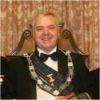
Kenneth C. Jack FPS is an enthusiastic Masonic researcher/writer from Highland Perthshire in Scotland.
He is Past Master of a Craft Lodge, Past First Principal of a Royal Arch Chapter, Past Most-Wise Sovereign of a Sovereign Chapter of Princes Rose Croix.
He has been extensively published in various Masonic periodicals throughout the world including: The Ashlar, The Square, The Scottish Rite Journal, Masonic Magazine, Philalethes Journal, and the annual transactions of various Masonic bodies.
Kenneth is a Fellow of the Philalethes Society, a highly prestigious Masonic research body based in the USA.
Recent Articles: Kenneth C. Jack
 Observations on the History of Masonic Research Archaeology is often associated with uncovering ancient tombs and fossilized remains, but it goes beyond that. In a Masonic context, archaeology can be used to study and analyze the material culture of Freemasonry, providing insight into its history and development. This article will explore the emergence and evolution of Masonic research, shedding light on the challenges faced by this ancient society in the modern world. |
 Anthony O'Neal Haye – Freemason, Poet, Author and Magus Discover the untold story of Anthony O’Neal Haye, a revered Scottish Freemason and Poet Laureate of Lodge Canongate Kilwinning No. 2 in Edinburgh. Beyond his Masonic achievements, Haye was a prolific author, delving deep into the history of the Knights Templar and leaving an indelible mark on Scottish Freemasonry. Dive into the life of a man who, despite his humble beginnings, rose to prominence in both Masonic and literary circles, leaving a legacy that continues to inspire. |
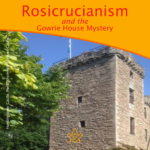 Rosicrucianism and the Gowrie House Mystery Unearth the mystifying intersections of Rosicrucianism and the infamous Gowrie House Mystery. Dive into speculative claims of sacred knowledge, royal theft, and a Masonic conspiracy, harking back to a fateful day in 1600. As we delve into this enthralling enigma, we challenge everything you thought you knew about this historical thriller. A paper by Kenneth Jack |
 Thomas Telford's Masonic Bridge of Dunkeld Of course, there is no such thing as a ‘Masonic Bridge’; but if any bridge is deserving of such an epithet, then the Bridge of Dunkeld is surely it. Designed by Scotsman Thomas Telford, one of the most famous Freemasons in history. |
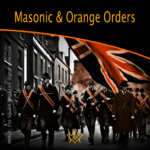 The masonic and orange orders: fraternal twins or public misperception? “Who’s the Mason in the black?” |
 Kenneth Jack's research reveals James Murray, 2nd Duke of Atholl – the 'lost Grand Master' |
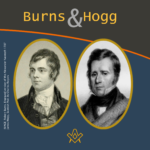 An Oration delivered to the Annual Burns and Hogg Festival, at Lodge Canongate Kilwinning, No. 2, Edinburgh, on 24 January 2018. By Bro. Kenneth C. Jack, FSAScot FPS, Past Master, Lodge St. Andrew, No. 814, Pitlochry. |
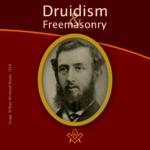 William Winwood Reade was a Scottish philosopher, historian, anthropologist, and explorer born in Crieff, Perthshire, Scotland. The following article by Kenneth Jack, provides some hints that William may have been a Freemason, but there is presently no definitive evidence he was. |
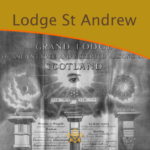 What's in a name? A brief history of the first Scottish Lodge in Australia - By Brother Kenneth C. Jack, Past Master, Lodge St. Andrew, No. 814, Pitlochry |
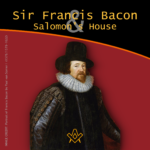 Sir Francis Bacon and Salomon’s House Does Sir Francis Bacon's book "The New Atlantis" indicate that he was a Rosicrucian, and most likely a Freemason too? Article by Kenneth Jack |
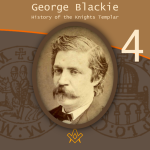 George Blackie – The History of the Knights Templar P.4 The final part in the serialisation of George Blackie's 'History of the Knights Templar and the Sublime Teachings of the Order' transcribed by Kenneth Jack. |
 George Blackie – The History of the Knights Templar P.3 Third part in the serialisation of George Blackie's 'History of the Knights Templar and the Sublime Teachings of the Order' transcribed by Kenneth Jack. |
 George Blackie – The History of the Knights Templar P.2 Second part in the serialisation of George Blackie's 'History of the Knights Templar and the Sublime Teachings of the Order' transcribed by Kenneth Jack. |
 George Blackie – The History of the Knights Templar P.1 First part in the serialisation of George Blackie's History of the Knights Templar and the Sublime Teachings of the Order – by Kenneth Jack |
 Little known as a Freemason, Bro Dr Robert ‘The Bulldog’ Irvine remains a Scottish rugby legend, and his feat of appearing in 10 consecutive international matches against England has only been surpassed once in 140 years by Sandy Carmichael. |
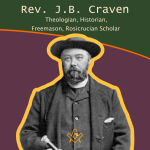 Rev. J.B. Craven: Theologian, Historian, Freemason, And Rosicrucian Scholar Archdeacon James Brown Craven is one of those unsung heroes of Scottish Freemasonry about whom very little has been previously written – here Kenneth Jack explores the life and works of this remarkable esoteric Christian. |
 Discover the powerful family of William Schaw, known as the 'Father of Freemasonry' |
 This month, Kenneth Jack invites us to look at the life of Sir William Peck; - astronomer, Freemason and inventor of the world's first electric car. A truly fascinating life story. |
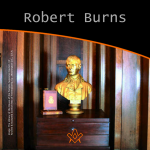 A Tribute to Scotland's Bard – The William Robertson Smith Collection With Burns' Night approaching, we pay tribute to Scotland's most famous Bard – The William Robertson Smith Collection |
 The Joy of Masonic Book Collecting Book purchasing and collecting is a great joy in its own right, but when a little extra something reveals itself on purchase; particularly with regards to older, rarer titles.. |
 Masons, Magus', and Monks of St Giles - who were the Birrell family of Scottish Freemasonry? |
 The 6th Duke of Atholl - Chieftain, Grand Master, and a Memorial to Remember In 1865, why did over 500 Scottish Freemasons climb a hill in Perthshire carrying working tools, corn, oil and wine? Author Kenneth Jack retraces their steps, and reveals all. |
 Charles Mackay: Freemason, Journalist, Writer Kenneth Jack looks at life of Bro Charles Mackay: Freemason, Journalist, Writer, Poet; and Author of ‘Tubal Cain’. |
 A Mother Lodge and a Connection Uncovered, a claim that Sir Robert Moray was the first speculative Freemason to be initiated on English soil. |
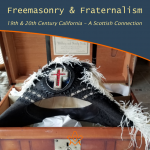 What is it that connects a very old, well-known Crieff family, with a former President of the United States of America? |
 The life of Bro. Cattanach, a theosophist occultist and Scottish Freemason |
 The Mysterious Walled Garden of Edzell Castle Explore the mysterious walled garden steeped in Freemasonry, Rosicrucianism, and Hermeticism. |
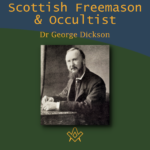 Dr. George Dickson: Scottish Freemason and Occultist Bro. Kenneth explores the life of Dr George Dickson a Scottish Freemason and Occultist |
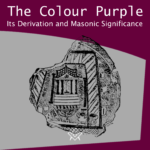 The Colour Purple - Its Derivation and Masonic Significance What is the colour purple with regards to Freemasonry? The colour is certainly significant within the Royal Arch series of degrees being emblematical of Union. |
 Bridging the Mainstream and the Fringe Edward MacBean bridging mainstream Freemasonry with the fringe esoteric branches of Freemasonry |
 Freemasonry in the Works of John Steinbeck We examine Freemasonry in the Works of John Steinbeck |
 Renegade Scottish Freemason - John Crombie Who was John Crombie and why was he a 'renegade'? |
 Scottish Witchcraft And The Third Degree How is Witchcraft connected to the Scottish Third Degree |
masonic knowledge
to be a better citizen of the world
share the square with two brothers

click image to open email app on mobile device








